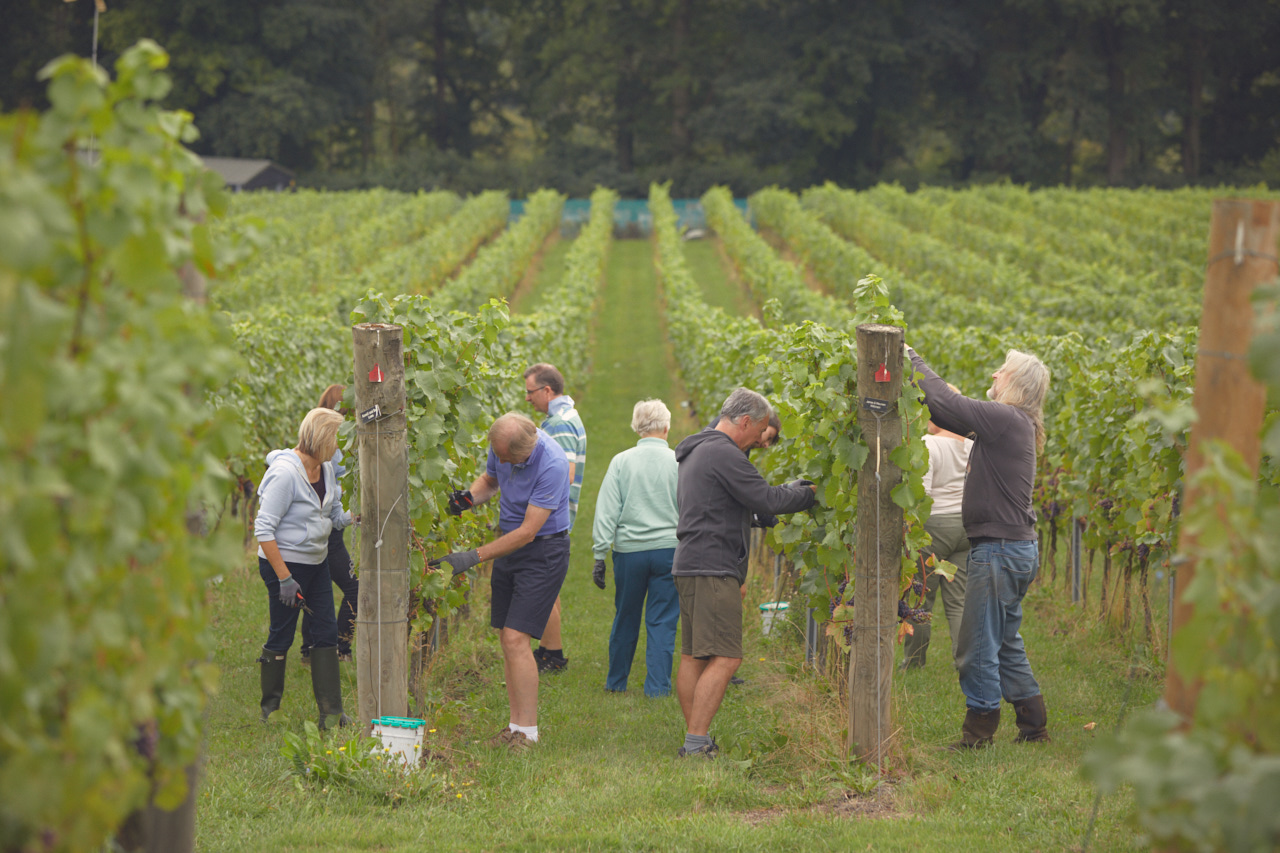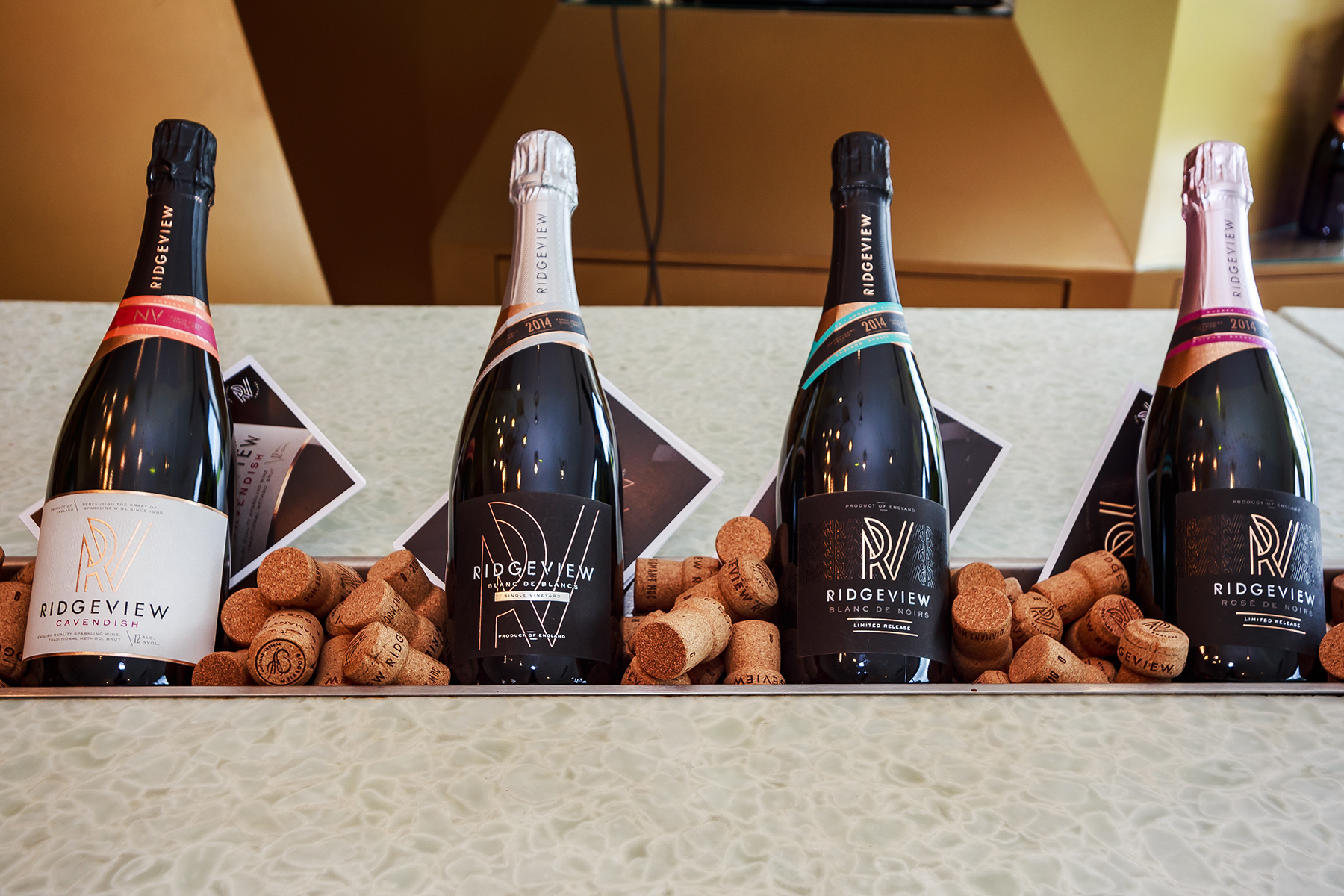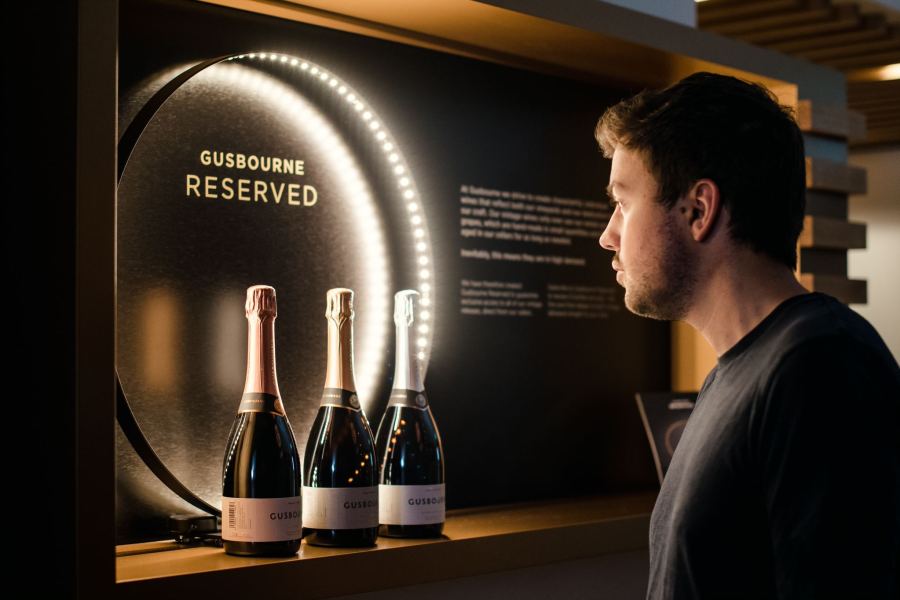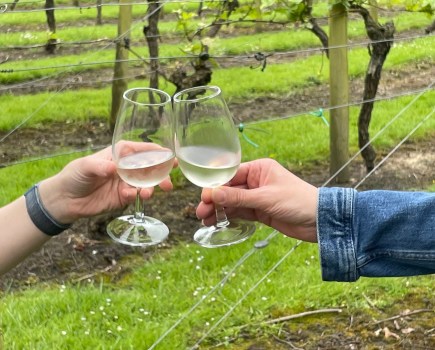What is there not to like with a wine club? For the winery subscription-based wine clubs are a predictable source of income bringing the higher margins from direct-to-consumer sales. For the customers the benefits include the exclusivity of limited releases, special offers and invitations to events – as well as a regular delivery of their favourite wines. Vineyard finds out how wineries are building closer relationships and customer loyalty, while boosting sales.
One of the impacts of the pandemic and lockdowns experienced by many wine producers is an increase in their online sales, and for many a shift in their businesses toward e-commerce and the development of subscription-based wine clubs. The draw for their customers is not always just about buying wine but experiencing everything that goes with it – and feeling part of the story from the work in the vineyard, to the harvest and winemaking.
“People were telling us that they wanted to be more involved with goings on at Furleigh – what the harvest was looking like and when we had new releases. They even wanted to come and help us at harvest! This made us think we could probably charge people for this and our first Wine Club was born,” explained Rebecca Hansford co-owner of Furleigh Estate in Dorset.
“At Albury local people asked us how they could get more involved with the vineyard,” said Nick Wenman, owner of Albury Vineyard in Surrey. “The obvious answer was to start a club to give them an insight to the operation of the vineyard and the production of our wines,” Nick added.
Benefits to the business
Elisabeth Else, e-commerce website specialist for the3bottles and Wine Cellar Door, first got interested in the business potential of wine clubs talking to producers in Sonoma, California, who were recovering from devastating fires. “They said that the regular income from wine club members was what had kept them going and it occurred to me that many UK producers would be grateful for some regular income!”
Elisabeth has now helped several UK producers set up and run wine clubs. “Watching our clients with wine clubs in action, it’s evident that giving discounts and putting on special events repays itself many times over – with members not only taking regular deliveries of wine, but also in adding more bottles to the deliveries they have committed to – and making additional purchases in between. Also, the producers we’ve worked with have all said, “surely people will want to buy their wines from more than one place?” and have underestimated how much loyalty and interest their brand has,” commented Elisabeth.
From the wine producer’s perspective, “a wine club gives you predictable, loyal and regular sales,” commented Justin Howard-Sneyd, who runs a wine club for his own Roussillon wine, Domaine of the Bee, has worked with Laithwaite’s wines clubs, and offers advice on starting and running a club. “A wine club encourages customers to buy regularly and makes it likely that they will become advocates. Operating a mixed case programme gives the winery the flexibility to select stock – improving stock, sales and cashflow forecasting,” Justin added.
“Ridgeview has had a wine club from the beginning, so for over 20 years now,” explained Mardi Roberts, Director of Communications. “Our original wine club has evolved in format from initially a paid membership to now a subscription-based club called OurView. The central importance remains the same, giving the loyalty they deserve to our best customers and developing longevity in the connections and relationships with our members by keeping them closer to our brand.
“The wine club is incredibly beneficial to our business; it has brought us closer to our most valuable resource – our customers. It is also a fantastic sales tool which has increased the retail arm of our business. By being a subscription-based club, we are now guaranteed two large retail consumer shipments throughout the year which is an invaluable sales benefit,” Mardi added.
“Gusbourne Estate set up their wine club in 2018, very soon after the launch of The Nest, our tasting room,” said Sophie Sturdy, Gusbourne’s Marketing Manager. “We were pleasantly surprised by how interested our visitors were, and by how often they bought a case to take home with them. Inspired by many successful wine clubs in the USA and Australia, we decided to launch Gusbourne Reserved. The key driver was that as a small producer, we have limited bottles to sell, so we wanted to make sure that our most loyal customers could guarantee regular access to Gusbourne, both with collectors and more casual drinkers in mind.
“Fundamentally, it helps us organise the supply of our wines long in advance, so that we have time to plan the perfect time to disgorge our wines and age them before release, as well as providing predictable cash flow. But this group of customers are amongst our most loyal and passionate too. They are great bellwethers – we often try out new wines with them at tasting events, and this helps to guide the way in which we talk about those wines with consumers more broadly. It also gives us space to innovate and try new things, as it gives you a market for wine produced in very small amounts – we have been known to create a specific wine especially for member purchase,” Sophie added.
Meeting the needs of the customer
Wine club members need to feel special and valued – they are treasured loyal customers and potentially great ambassadors. They need to receive exclusive offers, limited editions and, often more importantly, they should be made to feel part of the vineyard or winery with invitations to events.
“Currently we just have one level of membership at Furleigh and there is no joining fee,” commented Rebecca. “Our members get 20% off normal website and cellar door prices. They also get two free tickets for our wine club exclusive harvest days. In return they agree to buy at least six bottles of wine every quarter. We are planning to introduce a new membership level soon, which will allow members to choose the frequency of their wine shipments, how many bottles they commit to in each shipment and the type of wine (i.e. still or sparkling or mixed). Fortunately, Commerce7 deals with all this choice without us having to get involved with complicated record keeping,” Rebecca added.
“Every May and November, Gusbourne Estate send Reserved members their personal allocation of that year’s releases: two bottles each of Gusbourne Brut Reserve, Gusbourne Rosé and Gusbourne Blanc de Blancs. Membership also offers preferential rates and exclusive access to our library of limited-edition and rare wines. We offer pre-release access to all our wines before they go on general sale, and priority access to events and tastings. We also invite members to come and visit us in Appledore, Kent, for a complimentary members-only event twice a year,” commented Sophie.
Justin Howard-Sneyd offers customers a 20% discount on the normal retail price of his wine. “This doesn’t undermine the retailers who sell at the retail price, and it is a significant discount to our most loyal customers. We also offer exclusive access to older and rarer wines. And access to member events, such as our harvest weekends,” commented Justin.
At Ridgeview, the OurView Wine Club members join free of charge but sign up to a commitment of shipment of a case of six wines twice a year. “Members are entitled to 20% discounts off all purchases, exclusive member events, discounts in our Wine Garden, reserved cellar space and access to new releases and rare archive wines,” explained Mardi.
“We restrict the wine club to just 100 members and 20 ‘Premier Cru’ members, explained Nick from Albury vineyard, “so we don’t need any sophisticated software to run it, just an excel spreadsheet! We are fortunate in that we had built up a database of over 5000 active followers of the vineyard and we used this to promote the wine club offer.
“Members get a range of benefits including some free wine, discounts on additional wine purchases, a free members only event each year when we launch new wines, priority booking for events, involvement in the harvest, an invitation to the harvest party and discounts from other local businesses. Premier Cru members also nominally own 20 vines of their own, which they look after with our help, and they also get involved with producing the wine including involvement in dosage tastings,” Nick added.
Choosing the right tools
The benefits of a subscription-based wine club for both the business and the customer are clear, but without the right technology, the e-commerce platform and website software, the club can be time consuming and difficult to manage.
“I think the fear of a huge administration overhead is what stops many producers setting up a wine club, so it’s important to choose the right tools,” explained Elisabeth. “There are producers managing wine clubs with spreadsheets and separate mailing lists, but unless you’re a small producer with a very limited membership, it’s all too easy for the amount of admin to overwhelm the benefit,” she added.
“We chose to work with Commerce7, software which integrates with WordPress, because it has phenomenally powerful wine club functionality – the producer ‘proposes’ a case and invites the member to tailor the case, or they can just take it as it is.
“We’re finding that around two out of three people edit their cases – meaning that they get wine that they actually want. If all that did was increase customer satisfaction, it would be great, but in fact the average order value of edited cases is around 70% higher than the proposed case. This ability to edit cases is, in my view, the game-changer.
“Although most members actually sign up online, everything suggests that the decision to join takes place face to face – when a customer is enjoying a tour or tasting and feels an affinity with your wines and your tasting room. This is why it’s very important to make your proposition clear and have all your team talk about the wine club. We’ve also recommended putting wine club leaflets in with suitable orders, maybe the larger value ones that aren’t gifts, for example,” advised Elisabeth.
“The Ridgeview OneView wine club is linked to our website with the subscriptions on Go Cardless while we use MailChimp to stay in touch with our members. We are reviewing all of our systems as the more the membership grows the more complicated this is to stay on top of data. Our database has built up over time by requesting permission from our customers to join our mailing list at the point of sale or on our website. Like everyone we had to cleanse our database during the process of adopting GDPR however this has worked in our favour as a customer list is only as worthy as its most engaged audience and should be constantly evolving,” commented Mardi.
“We have built our club at Gusbourne slowly, through word of mouth, and largely though in-person visits to the winery,” explained Sophie. “Having passionate staff who genuinely understand the value of the club has been really important, and it’s testament to their enthusiasm that our customers become so passionate too. We run the club by email and spreadsheet, but we also have a bespoke website which is useful as it can adapt as we evolve our offering,” Sophie added.
The social media
As with so many aspects of marketing the correct use of social media is an asset and support, a chance to reach out or stay in touch or – as Furleigh Estate have found – to encourage FOMO (fear of missing out!). “Our wine club is another thing to talk about on social media. We also make sure we have stuff which it is clear is just for our members,” said Rebecca.
“At Ridgeview social media is a valuable resource in our marketing tool kit of promoting awareness of our wine club and the benefits in joining. By following our social media our audience become closer to the brand, feel more a part of the whole process and then more inclined to join our wine club,” explained Mardi.
“We find the majority of sign-ups happen when people are visiting us in person at Gusbourne, so social media is a small part of our strategy,” said Sophie. “However, we use cues and beautiful images to talk about what makes the wine club compelling, mentioning it when we release a new limited-edition wine for instance, or when we release tickets to a sought-after event,” she added.
Justin Howard-Sneyd has not found social media the best way to recruit new club members: “In my experience, our best recommendations are through word of mouth, and through sampling at events where new people can meet the team and taste the wines. By far the best form of communication is an email newsletter, and we work hard to make ours entertaining and compulsive reading.”
Wine club top tips
Rebecca at Furleigh said: “Make sure your staff really understand the wine club – almost all our wine club sign ups happen in the shop or after tours. If you need inspiration look at what they do in the US. Some of them have amazing Cellar Door experiences, matched by all sorts of Wine Clubs.”
“Respect and value the importance of your customers, if they feel a part of the brand they will become incredible long term supporters and ambassadors for you. Think outside the box for exciting exclusive events to keep your wine club members engaged and provide access to money can’t buy experiences,” advised Mardi. “Start small and think big. Manage customer expectations to make sure you can fulfil your promises. Start locally, those engaged on a local level can become some of your best ambassadors. Treat customers with the respect they deserve as one of your most valuable resources,” she added.
“At Albury we make members feel special by giving them a personal welcome when they visit the vineyard, communicate regularly with them via email or a newsletter, and generally make them feel part of the team by inviting them to some member only events. For us the wine club is a core element of our focus on increasing direct sales to consumers which now represents 40% of our sales by volume. However, it does take time and resources and you should measure the financial contribution if you can,” explained Nick.
“Don’t just pay lip service to the advantages of club membership – make it different and make it fun,” Justin Howard-Sneyd advised, “run regular events for members only, make special wines available only to members and give members other privileges – such as the chance to bring guests for free. I think it is good to operate a waiting list as it allows you to control the number of members, and to bring in a predictable batch of new members when you have the stock to support it. It also serves to maintain the aura of exclusivity!
“Wine selling is a human-to-human business – you are selling to real people, not just names on a spreadsheet. It works best when you like them, and they like you. So, make sure they get to meet you, spend time talking, and listening, to them – like friends, and not just customers,” Justin added.
“I always suggest to clients that it should be easy to join and easy to leave – as people are more likely to join if they don’t feel too locked in. Our clients were pretty concerned about people joining up, getting a discount and then leaving, but in fact they’ve had very few leavers,” commented Elisabeth.

Tour at Ridgeview
©Julia Claxton
Albury Green 
Ridgeview Wine Estate Photography by Paul Demuth 2019




